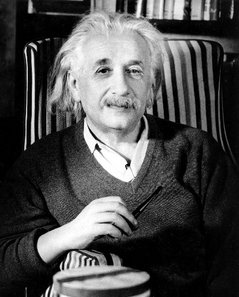

Sir Isaac Newton’s Principia Mathematica (1687)
Newton (1643–1727) wrote this classic text when he was twenty-four—a genius of geniuses. No intellect of any age or nation was his equal.
Newton demarcated the line between metaphysics and science; he augured the Age of Science (the Age of Enlightenment or Modernism), using the inductive/deductive method. He did not believe in abstract hypotheses. You investigate empirically measurable phenomena; then you write a description in which you induce conclusions. From that you can form theorems (the rules of reason) that have predictability and falsifiablity as criteria. He was a natural historian. He killed the Middle Ages and the scholasticism of Aristotle and Ptolemy. Men of learning now had to investigate reality in nature by observation and careful recording of data; you could no longer simply create systems from your head without rigorous proofs. In the Royal Society, you had to present your case to your peers to be published; otherwise, your works repaired themselves to the dustbin of history.
Newton investigated the laws of motion in the universe, so-called classical mechanics. He developed differential and integral calculus to measure the simultaneity of identifying objects in flight where position and speed could be delineated from moment to moment, which is differential calculus, while integral calculus posits the ultimate destinations of bodies in motion with accuracy. What exactly did he state? Newton’s First Law: “Every body continues in its state of rest, or of uniform motion in a right line, unless it is compelled to change that state by forces impressed upon it.” It can also be called the law of inertia. Newton’s Second Law: “The change of motion is proportional to the motive force impressed; and is made in the direction of the right line in which that force is impressed.” This can be stated as F = ma, force equals mass times acceleration. Newton’s Third Law: “To every action there is always opposed an equal reaction; or, the mutual actions of two bodies upon each other are always equal, and directed to contrary parts.” Otherwise formulated: “For every action, there is an equal and opposite reaction.”
Scientists use the variables of acceleration, mass, weight, and force (the initial impulsion of a body in motion) to describe the trajectory of heavenly bodies. Newton discovered the importance of gravity and by implication electromagnetism to explain why bodies have elliptical orbits. He described the world as a closed system in which everything defines everything else to form the laws of nature. He described phenomena empirically; he did not explore essences of substances (metaphysics), like Aristotle, to find spiritual characteristics to the elementary dynamics of natural phenomena, though he supposed a God had set up a law-like framework for man to discover. Newton published his still relevant law of universal gravitation in his Principia Mathematica in the terms: F = G m1 m2/r2. This signifies that where F is the force, mass one and mass two exert a reciprocal effect on each other, so that fhe force of the two m is the product of forces of the respective masses, divided by the square of r, the distance between their centers of mass, and G is a constant of proportionality called the gravitational constant.
Einstein modified Newton by saying that energy and mass are interchangeable in a universe where time and space are curved and the universe expands without limit. E=Mc2 summarizes the general theory of relativity. This formula was the basis for splitting the atom and creating weapons of mass destruction or an ultimate source of endless energy.
Einstein said that light was defined by quanta whose speed could be ascertained. In Newton's theory of optics, light was wavelike in nature and had a definable weight, mass, and speed, though in units not directly visible to the eye. He refracted white light through a prism to ascertain its properties; primary colors gave different units of heat along a spectrum. By developing de novo optics, gravity, and calculus, he buried metaphysics and developed science into a practical field of study with concrete results, such as predicting the orbits of planets, the trajectories of comets, how bodies in motion accelerate, and so forth. Too, there were applications to military science, particularly the use of firepower in cannon and missiles.
Newton was a friend of John Locke. Locke too believed human nature had the same law-like properties that could be found in Newton's mathematical universe. From such laws, moral principles could be discovered writ large in nature. Such a supposition really tenders a theory of theories to explain all the natural and human phenomena of the world with the common denominator of being amenable to the natural historical method. Newton had an influence on the American Revolution because its patriots thought that moral and political sciences could be rooted in a materialist conception of nature, that is, science and technology.
The romantic poets demonized Newton because they felt he had disenchanted the world of its wonder and reduced it to mere calculation and reason. Hence, he made man an object for study and not the agent of God’s will. This objectified man took himself as his deity who through reason would subjugate nature to his will—the ultimate hubris.
William Blake—poet; painter, and social critic—is famous for his watercolor of a Godlike Newton on a throne, measuring a miniaturized world with a compass. Man is full of hubris now.